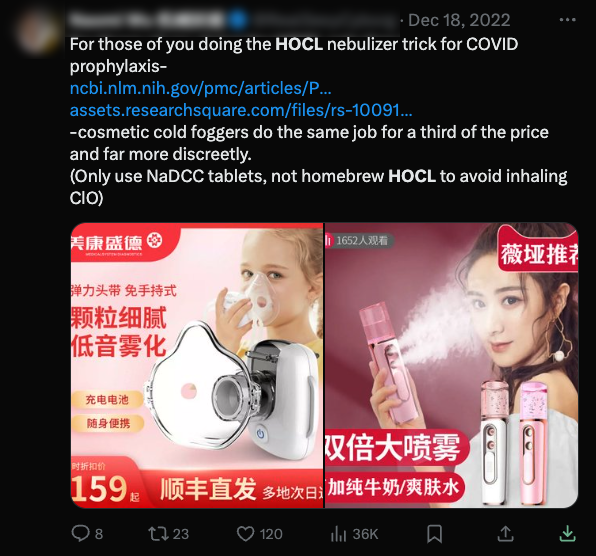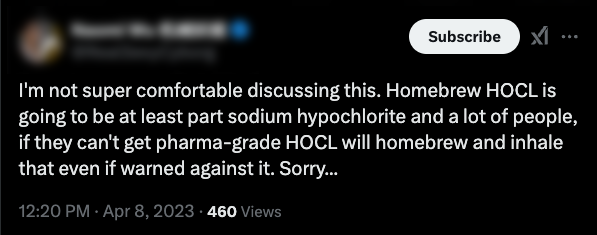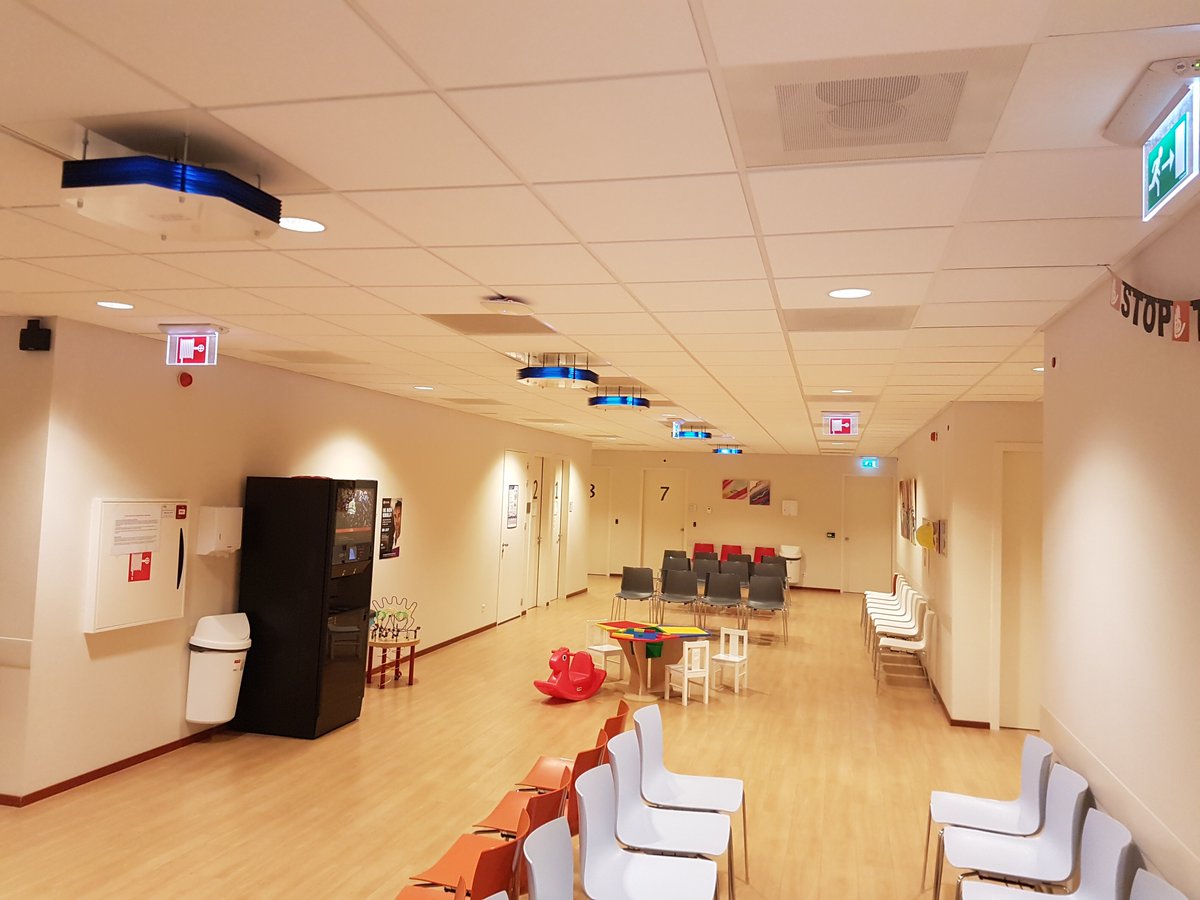Since the people who are receiving grants to promote and educate the public about Far-UVC are too busy giving lap dances to the Far-UVC companies whose products they are supposed to be researching without bias and in general trying to "get their beak's wet", while those same companies openly commit fraud, we'll continue our humble efforts at STEM-Ed here.
Yesterday we talked about the issues with using CADR as a measurement for Far-UVC effectiveness. Another metric we can look at is the fixture's radiant power output. The Nukit Lantern has a radiant power output of 30.5mW (cdn.shopify.com/s/files/1/0552…)
That means the entirety of all the power coming out of the fixture, in every direction, is 30.5 mW.
A device called a goniophotometer is used to measure the light from every angle, and that gives us a picture of the three-dimensional power output- which can be shown on a polar plot.

Yesterday we talked about the issues with using CADR as a measurement for Far-UVC effectiveness. Another metric we can look at is the fixture's radiant power output. The Nukit Lantern has a radiant power output of 30.5mW (cdn.shopify.com/s/files/1/0552…)
That means the entirety of all the power coming out of the fixture, in every direction, is 30.5 mW.
A device called a goniophotometer is used to measure the light from every angle, and that gives us a picture of the three-dimensional power output- which can be shown on a polar plot.


A lot of people tend to confuse this for Irradiance at Nadir- which measures power at just one point, not total power output. Radiant Power Output tells us how many watts are being pumped into the air so is a much more number.
Nadir is important when we are calculating safe eye and skin limits. An emitter manufactuer who is only giving you a single Irradiance at Nadir number is telling you nothing about the effectiveness of the product.
Here we can see that at 75cm away, the Nukit Lantern emits 4.6µW/cm² of 222nm light(µW is pronounced microwatts) of 222nm light. So 4.6 microwatts of Far-UVC light, are hitting each square centimeter (cm²), at 75cm distance. Now that gives us power- but exposure risk is measured by power and time- joules in this case.
The ACGIH limit for eye exposure is 160.7mJ/cm². 4.6µW/cm² takes 9.7 hours to reach that limit. That means you are safe, looking at the Lantern, for about 9.7 hours if you are 75cm away. If you are 100cm away that gives you 17.17 hours. But at 50 cm- tabletop level, you only get 4.34 hours.
That might be ok-ish but one Lantern is not enough to have an effect outside a small bathroom, and two Lanterns on a tabletop can halve your exposure time. If you aren't very careful with minimum distance, they could quickly exceed safe eye limits if they were on your desk at work, or even a long dinner or a few drinks with friends.
That's why we didn't make the Lantern emitter a portable battery powered device and instead made it for fixed installs and ask it be mounted high up. If you are sitting next to it and rolling the dice with precise distances, probably sooner or later you are going to get photokeratitis. It won't kill you, but it's like getting sand in your eye for a few days- not fun.
Nadir is important when we are calculating safe eye and skin limits. An emitter manufactuer who is only giving you a single Irradiance at Nadir number is telling you nothing about the effectiveness of the product.
Here we can see that at 75cm away, the Nukit Lantern emits 4.6µW/cm² of 222nm light(µW is pronounced microwatts) of 222nm light. So 4.6 microwatts of Far-UVC light, are hitting each square centimeter (cm²), at 75cm distance. Now that gives us power- but exposure risk is measured by power and time- joules in this case.
The ACGIH limit for eye exposure is 160.7mJ/cm². 4.6µW/cm² takes 9.7 hours to reach that limit. That means you are safe, looking at the Lantern, for about 9.7 hours if you are 75cm away. If you are 100cm away that gives you 17.17 hours. But at 50 cm- tabletop level, you only get 4.34 hours.
That might be ok-ish but one Lantern is not enough to have an effect outside a small bathroom, and two Lanterns on a tabletop can halve your exposure time. If you aren't very careful with minimum distance, they could quickly exceed safe eye limits if they were on your desk at work, or even a long dinner or a few drinks with friends.
That's why we didn't make the Lantern emitter a portable battery powered device and instead made it for fixed installs and ask it be mounted high up. If you are sitting next to it and rolling the dice with precise distances, probably sooner or later you are going to get photokeratitis. It won't kill you, but it's like getting sand in your eye for a few days- not fun.

Getting back to radiant power- total joules into the air. This is a very useful starting number to determine general effectiveness.
The now-discontinued Torch kit emitted 96mW and could reduce the pathogen load by 73.66% in an 30m3 chamber:
cdn.shopify.com/s/files/1/0552…
Two Lanterns offering a total of 60mW in the same 30m3 chamber reduce the pathogen load 74.66%:
cdn.shopify.com/s/files/1/0552…
While four Lanterns at 120mW get us to 89.07%:
cdn.shopify.com/s/files/1/0552…
This starts to give you a very rough idea how many mW of output are going to be useful- the 4.8mW and 8.8mW output units that some companies have been selling are doing a whole lot of nothing.


The now-discontinued Torch kit emitted 96mW and could reduce the pathogen load by 73.66% in an 30m3 chamber:
cdn.shopify.com/s/files/1/0552…
Two Lanterns offering a total of 60mW in the same 30m3 chamber reduce the pathogen load 74.66%:
cdn.shopify.com/s/files/1/0552…
While four Lanterns at 120mW get us to 89.07%:
cdn.shopify.com/s/files/1/0552…
This starts to give you a very rough idea how many mW of output are going to be useful- the 4.8mW and 8.8mW output units that some companies have been selling are doing a whole lot of nothing.



But, some of you might ask, how come the Torch kit emitted 96mW and could reduce the pathogen load by 73.66% and two Lanterns at a total of just 60mW in the same 30m3 chamber reduced the pathogen load by almost the same amount- 74.66%? One is pumping a lot more power into the air?
Well, total power output is very important- but it turns out it's not everything. Emitter position, beam spread, and angle also play important roles.
Optimizing those means getting more with less, which at Nukit is the name of the game because we don't want to sell Far-UVC that no one can afford. We need to get every bit of effectiveness out of every joule we can. We don't want to waste any of it.
One example of this, is when designing the ceiling-mounted Nukit Flare, we had four emitters set at angles to fully illuminate a room with as wide a beam as possible.
Well, total power output is very important- but it turns out it's not everything. Emitter position, beam spread, and angle also play important roles.
Optimizing those means getting more with less, which at Nukit is the name of the game because we don't want to sell Far-UVC that no one can afford. We need to get every bit of effectiveness out of every joule we can. We don't want to waste any of it.
One example of this, is when designing the ceiling-mounted Nukit Flare, we had four emitters set at angles to fully illuminate a room with as wide a beam as possible.
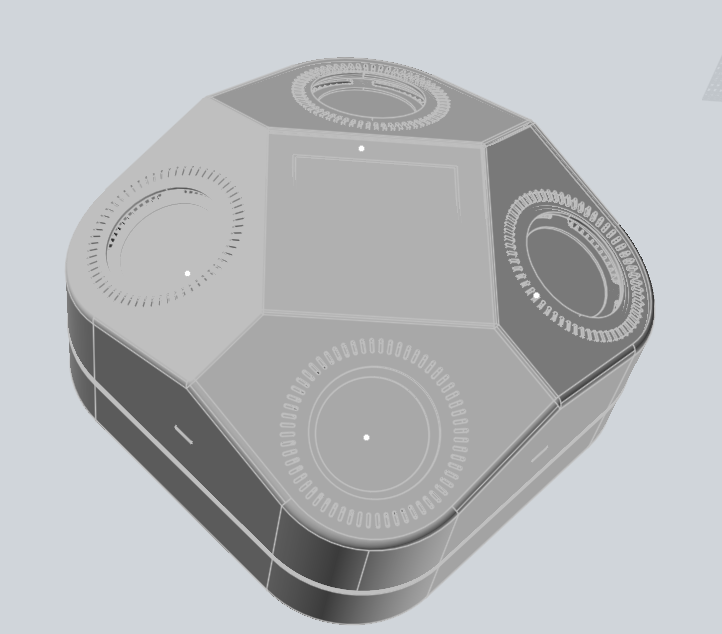
Most companies leave that angle up to the designers to eyeball, but we were able to run simulations in software, and squeeze out a few more percentage points of effectiveness from the fixture by optimizing just that angle.
You can see from the models below how optimized angles improve coverage, and so inactivation. Most companies just slap a USHIO or off-the-shelf excimer bulb in an enclosure and call it a day- but unoptimized designs mean higher cost for the same effect.
In this case, using an optimized beam angle costs nothing extra in tooling, finding the best angle is a one-time expense- but the benefits are recurring because every single user of that fixture is getting up to 7% more out of it, every hour it is used for the lifetime of the fixture. These little improvements quickly add up.



You can see from the models below how optimized angles improve coverage, and so inactivation. Most companies just slap a USHIO or off-the-shelf excimer bulb in an enclosure and call it a day- but unoptimized designs mean higher cost for the same effect.
In this case, using an optimized beam angle costs nothing extra in tooling, finding the best angle is a one-time expense- but the benefits are recurring because every single user of that fixture is getting up to 7% more out of it, every hour it is used for the lifetime of the fixture. These little improvements quickly add up.
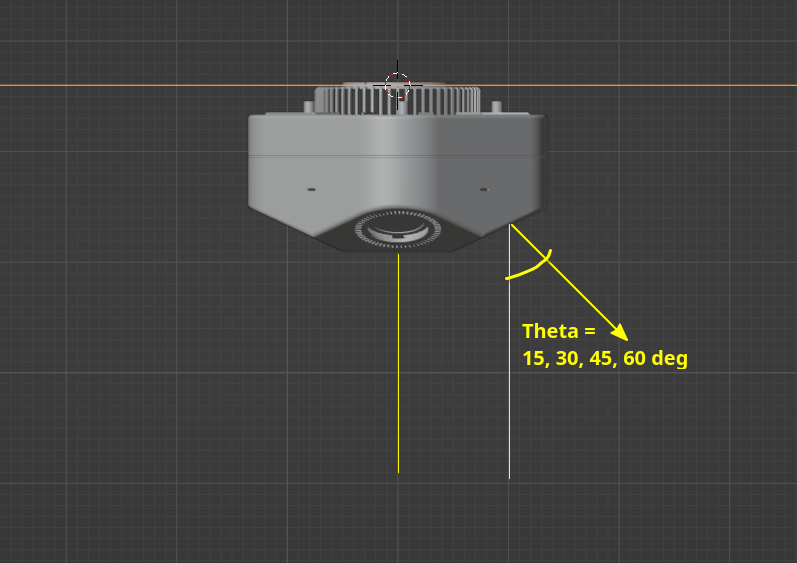

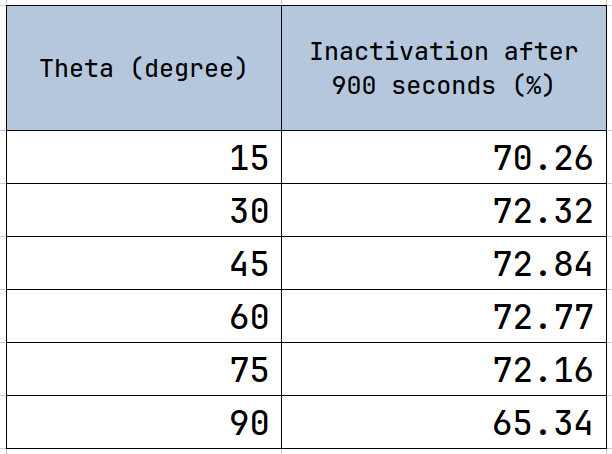
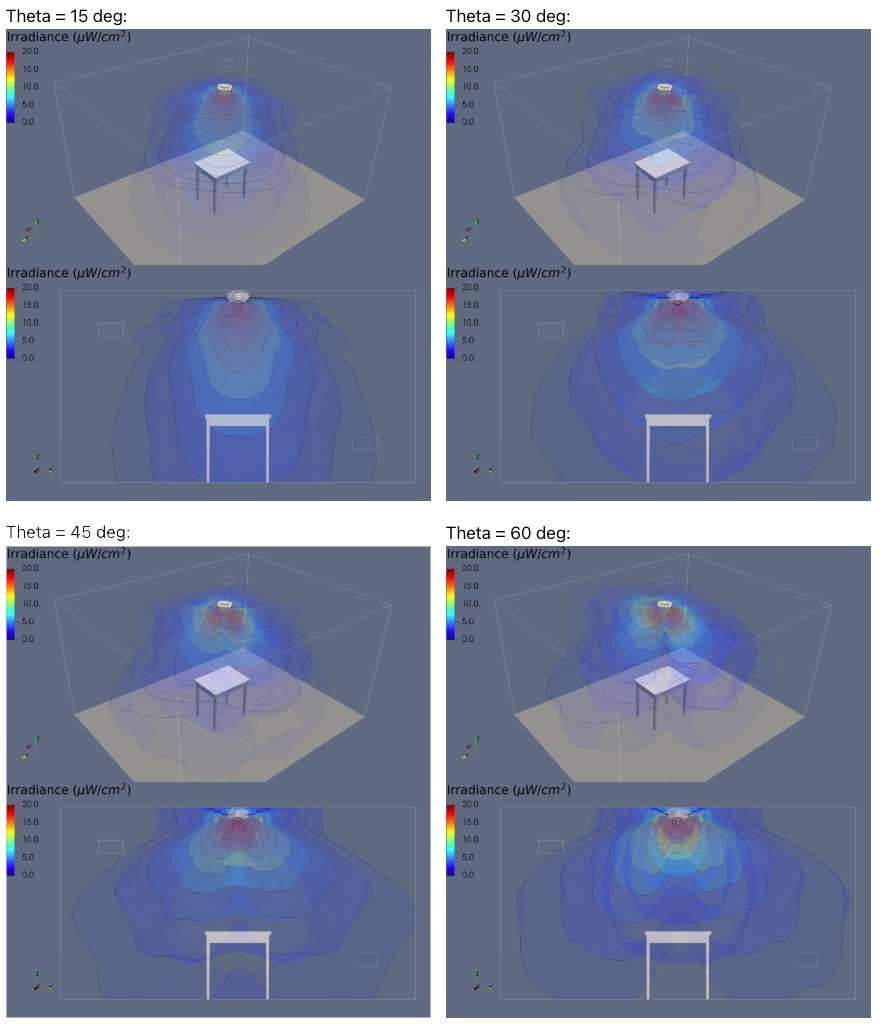
Takeaways- a Far-UVC product without a spectral analysis could be anything, there's no way to know if it's safe or will do anything at all. We know manufacturers lie, they've been caught at it, there are no consequences so why wouldn't they?
A photometric assay from Lightlab International is $1000 and provides a ton of data, if a company refuses to provide one for download on their product page, there is a reason.
Irradiance at Nadir will only very, very roughly tell you the power of a lamp and is mostly useful for safety calculations.
Radiant Power Output is the first metric you want to look at in terms of overall effectiveness. Keep in mind that broader coverage- either through using more emitters, wider beams or ceiling placement- will often beat sheer power.
We'll cover how to determine if an emitter is safely filtered another day.
If you found this helpful, kindly retweet or copy, paste and share anyplace you think it might be of interest.
A photometric assay from Lightlab International is $1000 and provides a ton of data, if a company refuses to provide one for download on their product page, there is a reason.
Irradiance at Nadir will only very, very roughly tell you the power of a lamp and is mostly useful for safety calculations.
Radiant Power Output is the first metric you want to look at in terms of overall effectiveness. Keep in mind that broader coverage- either through using more emitters, wider beams or ceiling placement- will often beat sheer power.
We'll cover how to determine if an emitter is safely filtered another day.
If you found this helpful, kindly retweet or copy, paste and share anyplace you think it might be of interest.
• • •
Missing some Tweet in this thread? You can try to
force a refresh













